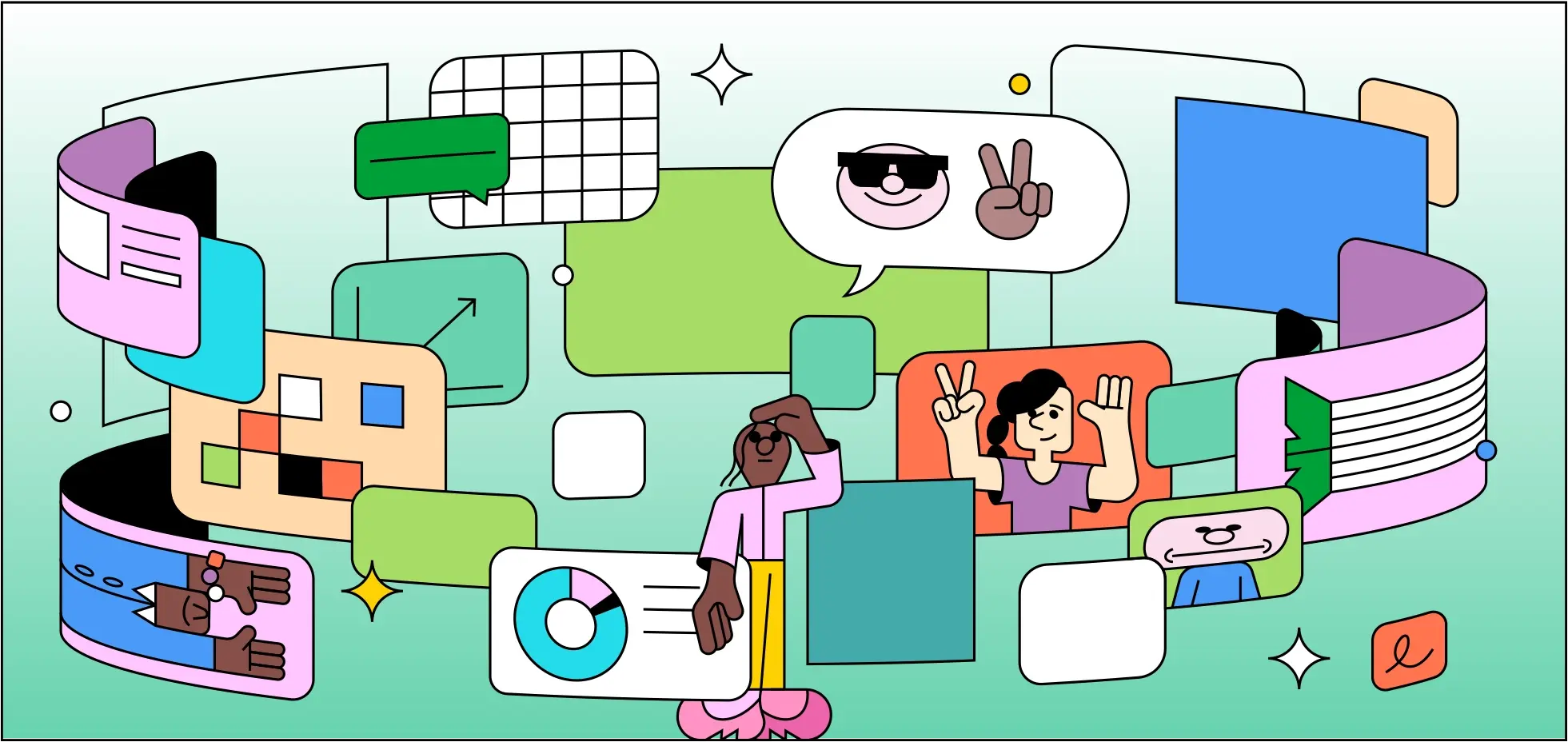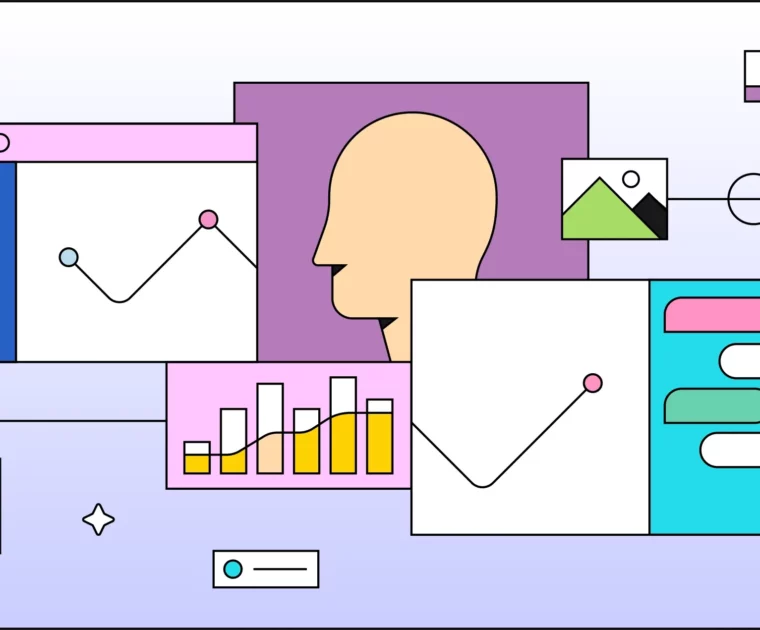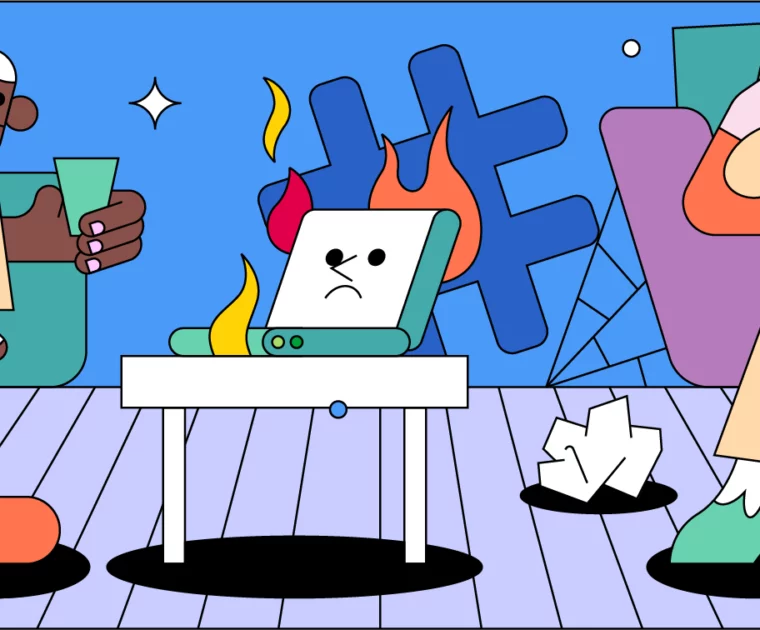Doesn’t it seem like everybody is an influencer these days? You may be wondering if it’s even worth it to put in the work it takes to wield influence on your favorite platform. You’re smart to consider before hopping into action because becoming an influencer isn’t easy. It’s a lot of work. But it’s not too late to become an influencer. If that’s the path you choose, there’s room for you to share your knowledge — or your weird, geeky thing — with the masses. And there’s data that says doing so can actually make you happier.
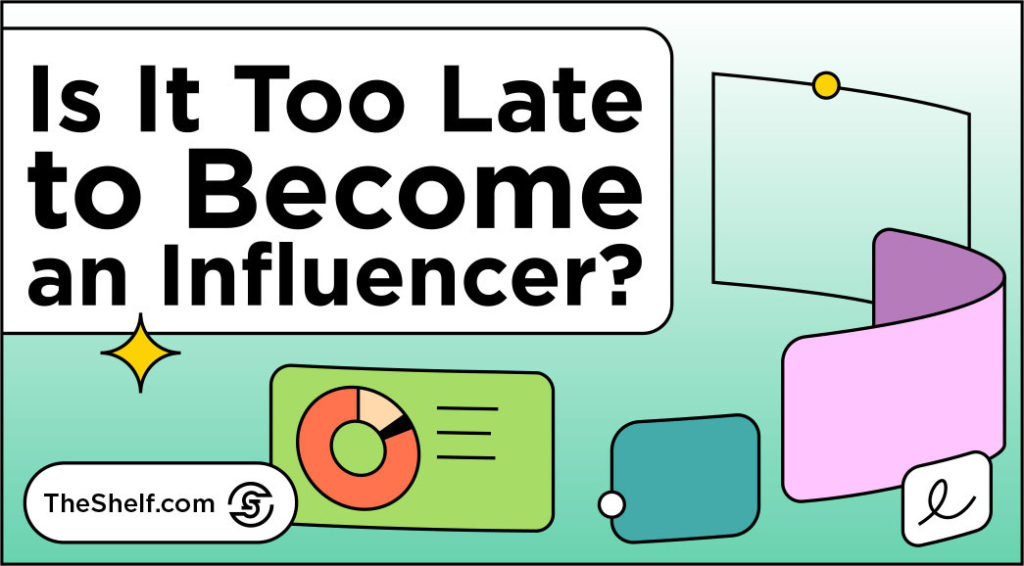
What Is An Influencer?
Our first order of business is to understand what an influencer is, and you’ll see why in a sec. A social media influencer is a social media user who has built a reputation for being knowledgeable about something. Influencers create compelling content around the topic they’re known for in a way that gets other people to take a specific action.
Content Creators vs Influencers
The terms “content creator” and “influencer” are often used interchangeably, but they’re not exactly the same. Content creators are those who create content for online spaces and monetize that content. Influencers are those who are able to build a sizable audience on a single platform and earn money by posting social media content to that platform. The size of the audience determines the influencer tier — the type or category of influencer.
Globally, only 1 in 5 content creators even want to become influencers. By comparison, 1 in 3 content creators want to earn money through content, and 1 in 2 content creators want to own a business. So… not everybody’s looking to be an influencer.
All influencers are content creators, but not all content creators are influencers.
How Many Influencers Are There?
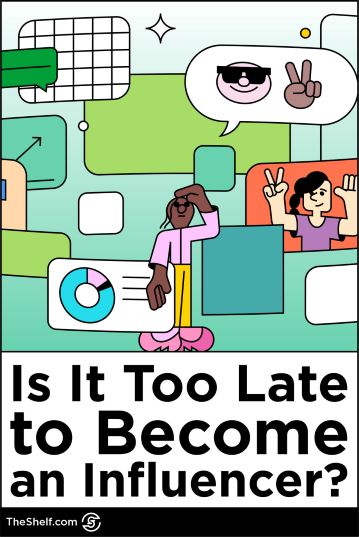
There are between 40 million and 50 million social media influencers worldwide, depending on whom you ask. Sounds like a lot, but consider this. In the US alone, there are:
- Approximately 33 million small businesses, according to the Small Business Administration
- 200,000 mid-sized businesses, and
- 20,000 large businesses
Large companies typically own a portfolio of different brands. For instance, Unilever owns 400 brands. Nestlé owns 2,000 brands. LVMH owns 75 “distinguished houses”. So, you can see how a pool 42 million influencers can seem like just a handful to discerning Marketing Directors at these bigger companies.
I read a recent stat that said 165 million new content creators have joined the creator economy since 2020. There are now around 303 million content creators around the globe, and 14 percent of them (around 42 million) are influencers.
- 23 percent of internet users identify as content creators
- 14 percent of content creators are also influencers
- Influencers represent about 3 percent of the global population
What Does It Take to Become An Influencer?
More. That’s the answer. Influencers are content creators who do more than other content creators. They spend more time on content development, more time getting good at creative activities, more time building relationships and forging those connections that will help them to influence people. They do more.
But there are four main signals we want to look at for influencers: intent, time, dedication, and connection.
Signal #1: Intent
In order to become an influencer, you have to want to become an influencer. Having a sizable following isn’t enough. When we published the first version of this post in 2018, the average social media user had something like 300 followers on Instagram and 150 on Facebook. TikTok wasn’t even a thing yet.
In 2023, Mention reports that half of Instagram users now have between 1,000 and 10,000 followers. And according to Statista, half of TikTokers have between 1,000 and 5,000 followers on the app.
That means technically, most Instagrammers and TikTokers have the numbers to become nano– or micro-influencers. But most have no desire to do so. The intent to influence is a key component of being a social media influencer. It’s one of the primary signals that distinguishes a content creator from an influencer.
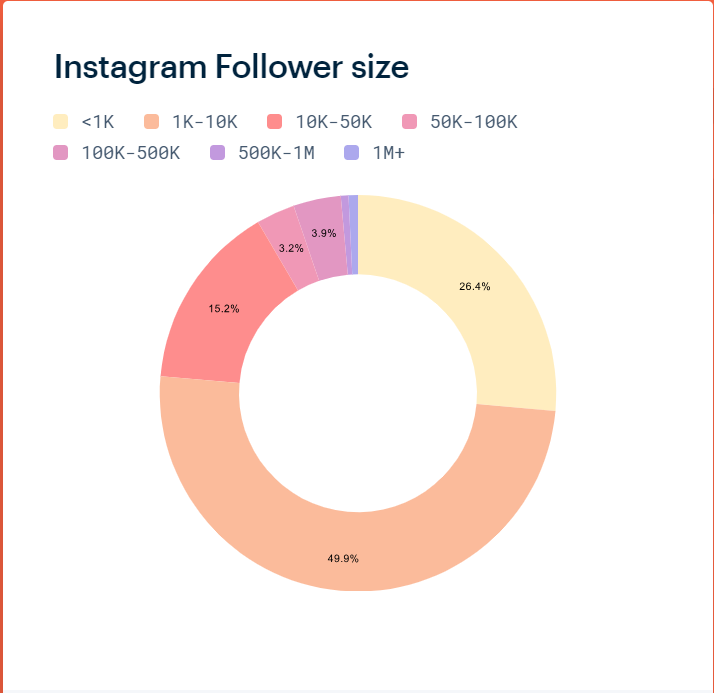
Signal #2: Time
Becoming an influencer requires a heavy day-to-day investment of your time and attention. “Creators in the Creator Economy” reports that content creators spend an average of 9 hours per week in content development, while influencers spend an average of 15 hours a week in content development.
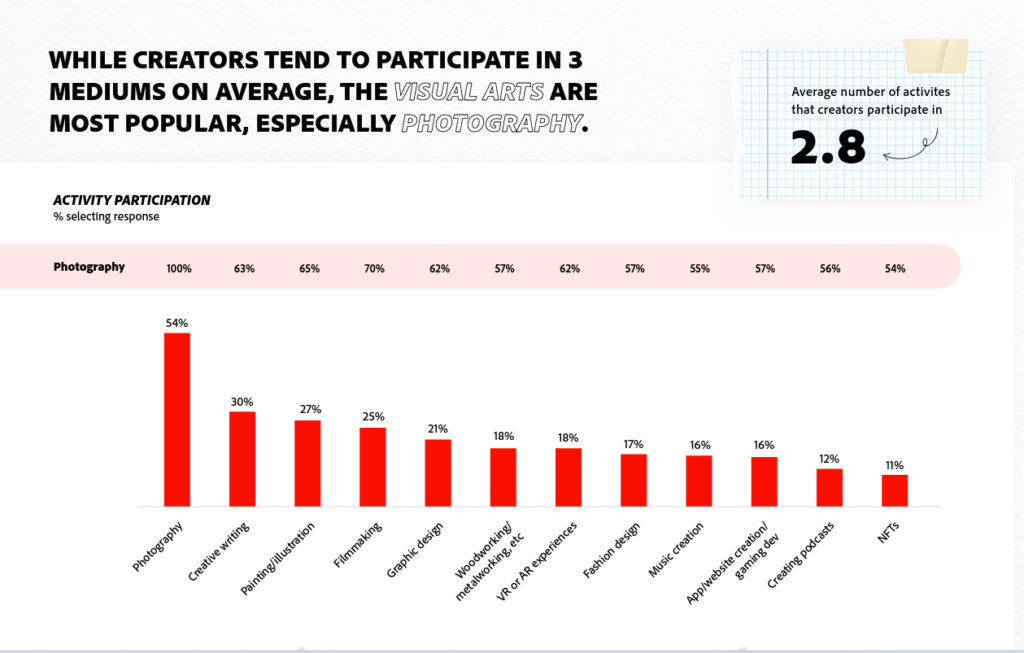
Not only that, but the average content creator is involved in 2.8 creative activities, whereas, the average influencer is involved in 4 creative activities. In fact…
Each of the major social media platforms has created an education hub designed to support content creators who want to build their audience, reach, and influence on the platform. Amazon’s Creator University is a type of education hub for Amazon influencers. Instagram has its Creator Lab, and TikTok has the Creator Portal. Each learning tool is specifically designed to help influencers grow their skill set.
So content creators go from wanting to create content to being good at developing content strategies. They go from creating solid content strategies to being good on camera. And from being good on camera to understanding lighting. And from there to video editing and filters. And then to post-production and repurposing. Whenever they are ready (or need to), content creators can add new skills that will benefit them on the platform.
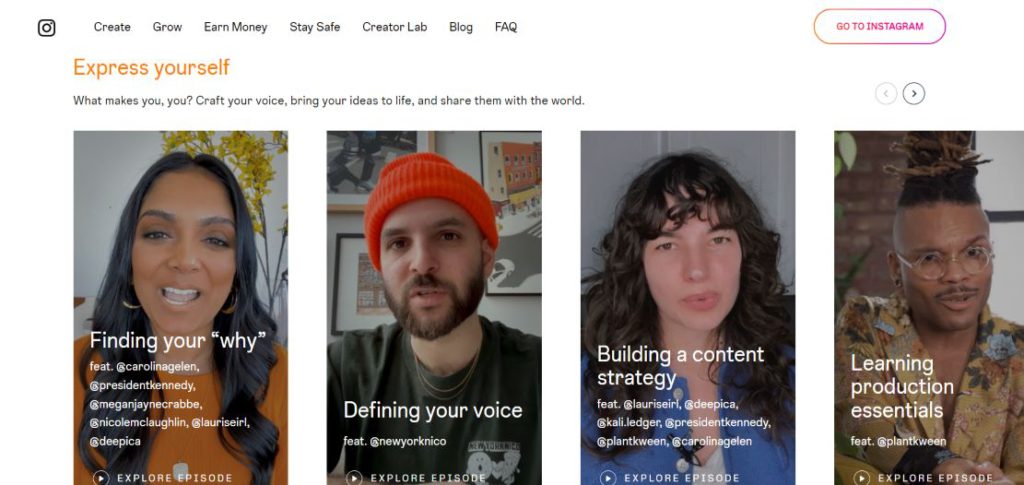
Influencers are also twice as likely to post content daily compared to content creators. Content creators are 3x more likely to post monthly than influencers. Overall, 89 percent of influencers post to their social channels at least weekly, compared to 68 percent of content creators.
Signal #3: Connection
Once upon a time, creating the right content was the most important part of becoming an influencer. Today, it’s as much about being able to authentically connect to your audience as it is about creating content. Earning sway on social media is about relationships. It’s about your ability to find your tribe and connect with them.
Being a content creator lends itself nicely to facilitating connections, in part because those who create content every day tend to be happier. For content creators, there is a positive correlation between their posting frequency and their happiness. The more frequently they post, the happier they are, in general. AND there’s also a mood boost if they get paid for creating social media content specifically.
Here’s why this matters: a study conducted by the University of Washington found that an influencer’s “activity rate, level of post positivity and follower brand-fit (or the degree to which the interests of an influencer’s followers match the sponsor), all produce more engagement on influencer posts.
Posting makes content creators happier. The more positive they are, the more engagement their posts get.
Just a really quick word on this: We understand that this isn’t the case for some creators, and many influencers have found it in their best interest to step away from the grind of content development to build more balance into their daily lives and optimize their peace of mind and happiness.
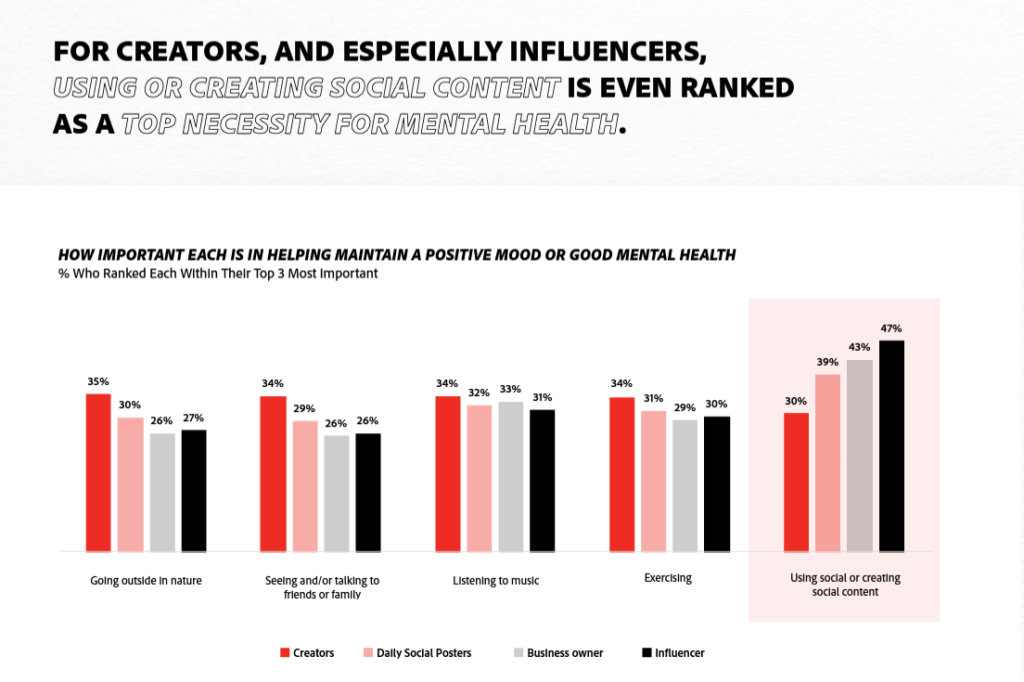
According to the study, 83 percent of influencers who post daily say they have a positive mood. By comparison, 62 percent of content creators say they have a positive mood. But…
77 percent of content creators who also earn money from social media AND post every day say they have a positive mood.
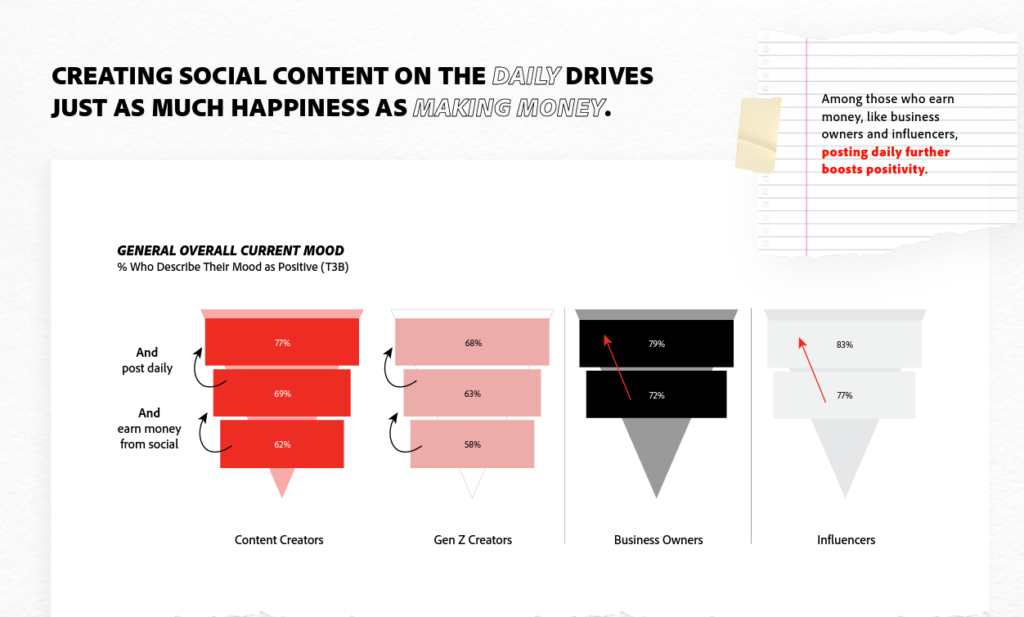
Turns out… good vibes matter. They help content creators forge the relationships they’ll need to become influencers. Those relationships and connections are what will enable influencers to move their followers to do something, whether that’s getting them to click on your content, pay attention to a recommendation about a brand or product, or get them to follow a brand account or go to a brand’s page. Being an influencer means you can get someone to do a thing.
Do a thing? Yeah, do a thing. If you can’t move them to DO something, it’s not influence, and you won’t make much money as an influencer… if that’s your goal.
Signal #4: Dedication
How long is all of this going to take??
I’ll be honest: It takes longer than you hoped to become an influencer, but not as long as people think. The average influencer has been creating content for about three years. According to “Creators in the Creator Economy”. Forty-two percent of influencers have been creating content for less than two years, and 58 percent have been creating content for three years or more.
Growing your following is great, but it’s just a first step… sort of like deciding you want to become a doctor, but first you have to finish high school. Growing your audience doesn’t make you an influencer (looking at anyone who’s ever “bought” influence), just like finishing high school doesn’t make you a doctor. But you need the audience if you want to become an influencer, just like you need that diploma if you’re ever to become a doctor. And both tracks — whether you’re shooting to be a doctor or an influencer — take time.
Thankfully, becoming an influencer isn’t going to take you a decade to accomplish, but trust me when I say the late nights of curating your feed, building a bank of video content, styling trendy looks, sourcing inspiration where you can find it, and outwitting algorithms is a part-time job on its own.
And after you do all of that, you’re going to have to learn to do it for the brands you work with as well if you want to make money as an influencer.
So… no. Not an easy side hustle.
Contrary to popular belief, influencers have to put in a lot of work before they ever get to the point where brands — the good ones — seek them out for partnerships. Plus, the greater your reach and influence, the harder you may have to work to maintain it.
Conclusion
As humans, we always want to be entertained. And we’re always going to be on the hunt for the next big thing — the next innovation. We’ll want to learn new skills, do new things, and join in the fun other people are having. As the world evolves and innovation drives us all forward, there will continue to be new things to discover and the opportunity to build communities around these new discoveries.
That means, there will always be room for influencers — community leaders, key opinion leaders, and ambassadors.
Becoming an influencer is doable, but it’s becoming increasingly difficult. For all the social validation you get from your online community — whether from friends, followers, or brands — becoming an influencer is hard work.

About the Author
Sorilbran Stone | Content Strategist
I serve as the resident content strategist and the official Head of Content Marketing at The Shelf. Marketing is my happy place. I’m as happy looking at analytics as I am actually creating a thing. I focus a lot on dreaming up and implementing the best ways to create, publish, and distribute content that will builds our brand and gets our readers to do a thing


